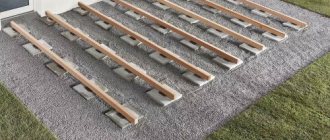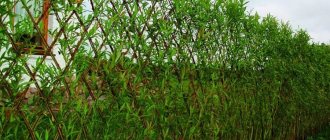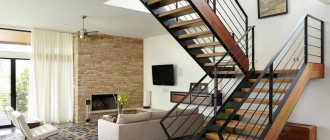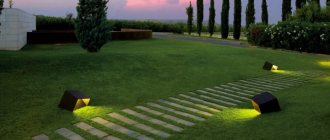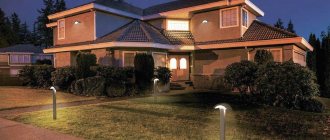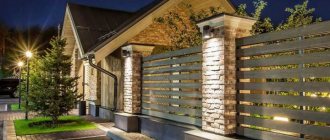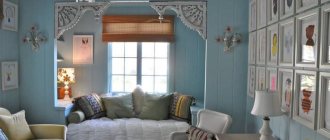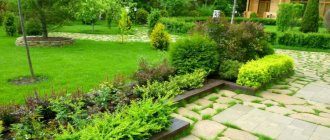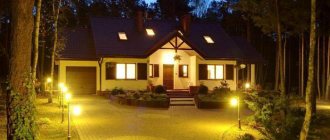In a country house, the staircase is an extremely important structural element. Which not only allows the owners to get from the first floor to the second, but also to do this with maximum comfort, safety and convenience. That is why many factors must be taken into account when designing and installing stairs. You need to think about what type of staircase it will be, what materials it will be made of, and how it will be decorated at the construction design stage.
The modern market for the production and assembly of stairs offers many options - in various styles and modifications. But among the many models presented, you can certainly find a high-quality and durable design that will serve you and your household for many years faithfully.
Folding and attached
Such stairs are otherwise called attic or attic stairs. The essence of the idea: there is a hatch in the ceiling, opening which, a person lowers a folding, retractable or folding module made of steps and railings, rises, and upon returning hides it back, so not a centimeter of precious space is wasted on the lower floor. This is ideal for a small cottage.
The staircase does not necessarily have to fold and “go” to the upper floor. You can use a stepladder on wheels and place it behind a door or closet after use - this way you won’t lose much space either.
"Goose Step"
A classic one or two flight staircase does not always fit in a small dacha, then the principle of “goose” or “duck step” comes to the rescue. This model has a steep slope of 60-80 degrees, an unusual ratio of the width of the tread to the height of the riser, and a special shape of the steps - they have recesses.
In order to comfortably move along such a ladder, you will have to get the hang of it and follow the strict order of placing your feet, which is laid down by the design.
Material selection
The easiest material to manufacture is wood. There are a huge number of breeds on the market that differ in different characteristics of strength and rigidity. Hard or coniferous species are well suited for construction.
Using wooden stringers
The latter are considered the most plastic type and the easiest to process. The cost of such species is also relatively lower than that of heavy, durable wood such as oak or cedar.
Wooden bowstrings
There are also other advantages:
- upon external examination, defects are easily noticeable;
- the use of special tinting or stains will allow you to change the appearance of the wood to suit a specific interior style;
- acceptable level of strength.
At the same time, the tree should not have a large number of knots, with no cracks visible to the eye. The surface texture should be uniform; an unnatural gray or green coating indicates that the plant has microorganisms and mold. Such wood will not last long.
Metal version
Particular care should be taken to ensure that there are no traces of insect activity on the surface that spoil the wood. The pores are of considerable size and the grayish coating around them will be clearly visible upon careful examination.
There should be no cracks or knots on the beams that are selected for load-bearing function. Otherwise, the strength of the structure is reduced and its destruction and injury are possible. When placed in a warm room, the wood expands and a knot may fall out.
The dimensions of the supports must exceed 100x80 millimeters, the thickness of the steps is 50 mm, and the thickness of the risers is 30 mm. With this choice, an optimal level of strength is achieved at minimal cost.
From logs and saw cuts
Having figured out the optimal design of stairs for a small dacha, let’s move on to materials and appearance. Many owners of modest country estates in our country prefer to build houses from wood and also use wood in interior decoration. To emphasize the warmth and color of a wooden interior, you can install an original staircase made of logs or saw cuts.
A massive log can act as a base, and saw cuts or small logs can replace steps.
Calculation of steps
The most important stage in the preparatory work of the project is the calculation of the dimensions of the steps. It is these components that ensure ease of ascent and descent and safety of operation. They affect the area that the staircase will occupy in the house.
The first step is to calculate the number of steps. It is necessary to carry out the work correctly before preparing materials and tools. To find out the exact number of treads, you need to divide the total height of the room from floor to ceiling and ceiling by the height of the steps. Round the resulting number up.
Climbing angle
For example, if you plan to make risers with a height of 17 centimeters, and the height of the first floor with the ceiling reaches 290. In this case, the number of steps should be 290/17 = 16. Since the first and last coincide with the level of the floor and ceiling on different tiers, they should be made separately not worth it.
Calculation of winder treads
When drawing up the drawing, be sure to focus on the height of each of the people who will climb the stairs. If there are children in the family, you will have to take into account some nuances, for example, a narrower distance between the balusters.
After which, you need to correctly calculate the length of the lifting platform. This is required to obtain the exact width of the step. To calculate, you will have to divide the total length of the proposed march by the number of steps.
Calculation of the stringer
If there is an overhanging part at the step, you will also have to additionally calculate the width of the overhang.
With shelves and racks
In a small dacha, you want to make the most of the usable space, so why not equip the staircase to the second floor with a simple storage system? Let you have bookshelves instead of risers, and in the space under the stairs - a rack where you can store a lot of things besides books.
Shelving under the stairs plays not only a utilitarian, but also a decorative role. Arrange the shelves asymmetrically, fill them with photo frames, figurines, and potted indoor plants, and your interior will be transformed.
Stringers
This type is the most frequently used option when creating a project and installing stairs. They are installed in a variety of rooms because they fit well into any style. The advantage of this design is the ability to change sizes if desired, as well as safety and strength. These types come with and without approaches. Another nuance is the steps. How to attach them? This depends directly on the number of beams connected to the base. There can be either one or two. There are various types of stringers: screw, broken, straight. The use of any of them depends only on your ideas and preferences. Clients come across such a huge imagination that they come up with completely unique and inimitable projects for their home.
If you have a classic style, then, for example, the best option for the interior would be a wooden staircase or a stone staircase with risers.
For a better understanding of how these structures will look, below we provide photos of examples of stairs installed in a private house.
With wrought iron railings
Not everyone likes simplicity and economy; others want to make their small dacha elegant and respectable. To do this, you can use artistic forging, which will elevate even a small staircase without overloading it. If, of course, you choose an unpretentious pattern.
Forged railings look harmonious in combination with any steps, including wooden ones. Add openwork metal elements to the interior - lamps, candlesticks, flower stands - and the picture will be complete.
The best way to cover the stairs
If the staircase is ready, but it is clear that something is missing, then you can finish the staircase with a decorative covering. Lots of options:
- It is better to paint only concrete stairs. There is no need to spoil forged metal or beautiful wood.
- Absolutely any staircase can be covered with carpets. The advantage of carpeting is its softness, pleasantness to the touch and when walking. Also, carpets are quite safe due to the lack of slipping if there are children or elderly people in the house. But it’s worth thinking about securing the carpet, because one wrong step can make the carpet “slide.” One of the downsides is that the carpet needs to be cleaned regularly and sometimes washed. This is a rather labor-intensive process.
- Laminate is the cheapest option for finishing, but it's worth considering non-slip edges. Even though this is the cheapest option, you need to carefully mark the material. Laminate flooring is very difficult to cut into specific shapes and can result in a lot of waste.
- Tile is a very beautiful option for finishing, although it is very rare. The tiles are wear-resistant, but you need to choose them with notches to prevent slipping.
- Natural stone is, although the most expensive, but at the same time the most beautiful and elegant option for finishing steps. One of the disadvantages is “loudness”. If you decide to quickly walk down a rock with your shoes on, everyone in the house will hear it. To ensure safety, it is better to purchase anti-slip tape.
Carpet as a covering for stairs Source papermagaz.ru
With wood carving
A less expensive, but no less effective way to refine a wooden staircase is to use carvings. This technique is usually used to decorate railings and balusters. The finished work is covered with stain and varnish if they want to preserve and highlight the beauty of natural wood, or painted if the interior design requires it.
You can decorate not only balusters and railings with carvings, but even risers - being on the first floor, you can admire the pattern.
Design calculation
Example of a project
If you plan to make a staircase yourself, you need to choose the right parts. And for this you need to make several preliminary calculations. Without this, it will not be possible to make the design safe and comfortable to use.
The amount of materials purchased depends on what is planned in the drawing. It is advisable to purchase a little more, since there is always room for surprises when working. Typically, in addition to the purchased volume of materials, an additional 10 to 20% is purchased. If there is surplus left after the work, it can be used for other purposes.
Winder sites
With tiles and mosaics
Bright tiles and mosaics fit surprisingly well into the modest provincial interiors of small dachas. It can be placed not only on walls and floors - let it decorate your staircase.
The mosaic pattern will look good both on the steps and under them, but it is better to choose one option so that there is no effect of diversity and merging.
What types of stairs are there?
All staircases for summer cottages, based on their design features, can be divided into 5 types:
- Marching.
- Screw.
- Staircase on rails.
- "Duck step"
- Attic.
Marching
The most common in modern multi-storey buildings is marching. The name comes from its design - marches. This design is most optimally installed in places where there is a large amount of free space. In other cases, installing a flight of stairs is difficult and does not make much sense. What is its feature? This is a straight staircase consisting of flights. Each march consists of steps, ranging from 3 to 15. If the number of steps is greater, then climbing to the next floor will be very tiring. Most often, no more than 11 steps are installed, and an intermediate platform is made, the width of which does not exceed the flight itself.
Marching staircase Source dizainall.com
Also, the staircase can be of 2 types: closed, when there are risers, and open, when there are none.
Screw
A spiral staircase for a private house is mainly installed in a limited space. It is a column around which steps are installed. The width of the steps should be at least 27-30 cm, otherwise discomfort will be felt when climbing. Spiral staircases are also a very cheap option since they do not use as much material as a flight staircase. They also do not require a strong load-bearing wall.
Spiral staircase Source poisk-mastera.ru
The most important advantage is the aesthetics of the spiral design.
Important! It is not recommended to install spiral structures in places where residents will often carry things and other large loads, or if there are children in the house. This is not only inconvenient, but in some cases dangerous.
Staircase on rails
It has a very beautiful and pleasant appearance. A person who first saw such a staircase may think that it is not reliable, but this is not so. A properly designed ladder can support a weight of about 180 kg. Its name comes from the word “boltsa” - bolts. The steps are bolted and then supported on the wall. Also, the steps overlap a little.
Staircase on rails Source idei-landshafta.ru
This option will fit perfectly into a futuristic or modern design.
See also: Contacts of construction companies that offer house design services.
"Duck Step"
If there is little space in the house, then the “duck step” is the best option. The modular design, as a rule, has a rise of 45 degrees, but there are also designs with a 70-degree rise. You can freely choose materials for it, almost all of them are suitable for maintaining the style of the interior, but you should remember about safety. If there is enough space in the house, then it is better to bypass this option, since it is not the most convenient to use.
Staircase "duck step" Source lestnica-prosto.ru
Attic stairs
They are also called “attic”, as they are mainly used for lifting into the attic. They cannot be called stationary, since they must first be deflated to be used. By design they are divided into:
- front doors (the slope is 45 degrees),
- compact (slope from 45 to 60 degrees);
- steep (climbing vertically upward; stepladders).
Attic staircase Source ilcommercioedile.it
They are also perfect when the whole house is laid out, and a stationary one can ruin all the harmony. With the help of an attic staircase you can organize a fire exit, and its compactness will make it extremely invisible, but at the same time convenient.
With carpet
By laying carpet on the stairs, you will kill three birds with one stone: you will decorate it, make it soft and warm for your feet and safe in terms of the risk of slipping. This is especially true for summer residents with small children and elderly relatives.
You can put textile pads on the steps, purchasing them in a store or making them yourself from an old rug, or you can lay out a carpet.
With plants
Another interesting option for using the space under the stairs is organizing a winter garden. Create a picturesque composition from large floor pots or boxes, and hang smaller containers on hooks directly to the steps. Spot lighting will complement the ensemble and make life easier for the flowers.
It is not necessary to decorate the stairs with troublesome living plants. Artificial flowers wrapped around the railings also look decent.

